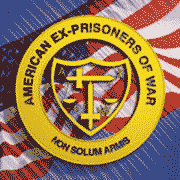
Established April 14, 1942
 |
American Ex-Prisoners of War
A not-for-profit, Congressionally-chartered veterans’ service organization advocating for former prisoners of war and their families.
Established April 14, 1942 |

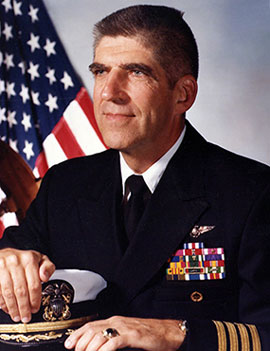
Capt. Richard A. Stratton, USN
|
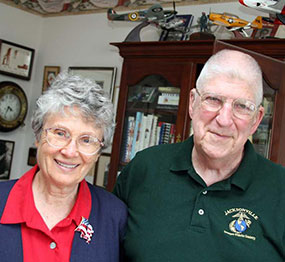
Dick and Alice Marie Stratton
|
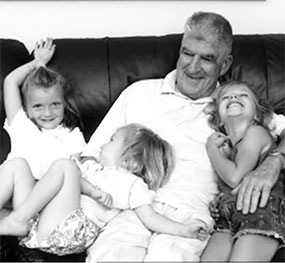
Dick Stratton and grandkids
|
| Last Name | First Name, Middle Init. | Nickname |
| Spouse | City | State, Zip |
| Conflict | Branch of Service | Unit: |
| Military Job | Date Captured | Where Captured |
| Age at Capture | Time Interned | Camps |
| Date Liberated | Medals Received | |
| After the War ... | ||
He married Alice Marie (Robertson) in 1959 while at the Alameda, California Naval Air Station. (In 1964 he earned an MA in International Relations at Stanford University.)
In October 1966, Stratton was assigned to the USS Ticonderoga for deployment to the Gulf of Tonkin and South China Sea. During his squadron's first forty days of combat, he accumulated 21 missions. The following January, Stratton was shot down on a reconnaissance mission over Thanh Hoa Province, North Vietnam.
He ejected safely but was captured shortly after reaching the ground. He was held prisoner in North Vietnam for 2,251 days, during which time he was subjected to regular and brutal torture sessions. He was liberated in 1973 as part of "Operation Homecoming" and returned to the United States on March 8, 1973. While a prisoner, he was promoted to commander.
Following release and repatriation, Stratton served in a succession of assignments including Commanding Officer, Navy Recruiting District New York, East Meadow LI, New York; Commander, Recruiting Area Five, Great Lakes NTS, North Chicago, Illinois; Deputy for Operations, U.S. Naval Academy, Annapolis; and Director, Naval Academy Preparatory School, NETC, Newport, Rhode Island.
Retiring from the Navy in 1986, Stratton next pursued a career as a licensed clinical social worker, practicing in Rhode Island, Georgia and Florida (Substance Abuse, Sex Offenders, PTSD, Families & Children).
He and Alice Marie raised three sons and are the grandparents of six granddaughters. Alice, a clinical social worker, served as a Deputy Ass't. Secretary of the Navy for President Reagan (1985-89). Two sons served with the USMC in Operation Desert Storm. One granddaughter serves in the USCG.
What follows is Stratton's first-hand account of his POW experience recorded from his first day of capture to his release on March 4, 1973.
"The USS Ticonderoga (CVA-14) departed San Diego in October 1966 for combat operations on Yankee Station in the South China Sea. The targets were in both the Republic of Vietnam and in North Vietnam. I was attached to Light Attack Squadron 192 flying Douglas A4E Skyhawks and assigned the collateral duty of squadron Maintenance Officer.
"On January 5, 1967 I was assigned a weather reconnaissance mission with the first launch of the daytime 12-hour cycle of operations. My wingman was John Parks and our weapons load consisted of 2.75" FFARs. We checked out the weather (it was bad; they flew anyway) and then made a run along the North Vietnamese coastline to see if we could locate any visible cargo carrying boats or portable bridge sections.
"Upon locating a bridge section, I launched rockets from their Aero7D Pod; they misfired, collided and exploded, and the debris went into my jet's engine causing it to disintegrate. I ejected from my aircraft just as the tail blew off the airframe, parachuting into the canopy of the only tree behind the only house in five square miles. I was captured by armed peasants before I could get the helmet off my head. They cut all the clothing from my body leaving me barefoot in shorts and T shirt, blindfolded me and then started me on an 18-hour march.
"The first day of my capture was an adventure in itself. The peasants were understandably angry with me and those that could reach me beat me severely about the head and shoulders. I was given no food or water. But I was in no way systematically abused. My captors made an effort to protect me. By dawn the next day I had been transported to downtown Hanoi to their main prison -- Maison Centrale. I was turned over to the regular army and communist political cadre without any major injuries either from the ejection or the peasants.
"The only information the military interrogators wanted from me was the list of the next targets and identification of new weapons. I did not know what they were; no one did. All meaningful targets were being designated by politicians in the basement of the White House; we would not know our targets until a couple of hours before we launched. This was not for security reasons. We had no new weapons: I had just shot myself down with rockets left over from WWII. The interrogators seemed to know this and did not pursue the issue.
"From about 1965 to 1969, the North Vietnamese Army communist political cadre freely used torture to obtain propaganda, to force interviews with anti-war visitors and to generate anti-war statements. During that period 95% of us were tortured, 95% were made to give more than name/rank/serial number/DOB, and none of us was offered the option of death. This mistreatment was authorized from the highest level of their government. The first two years of my imprisonment were difficult and a life-threatening experience. Every scar upon my body was inflicted by the communist political cadre.
"The conditions of POWs in the Hanoi area were far better than those in held in South Vietnam, Laos, Cambodia and frontier areas of North Vietnam. No two POWs were treated the same. Whether this was by accident or by design I do not know. The result is that not one of us knows the whole story of the Vietnam POW experience.
"After the initial hard torture in about two weeks I was issued my kit. It consisted of a "uniform" which looked like two-piece PJs with prison stripes, black boxer shorts and T shirt, rubber tire "shower shoes," tin cup (from Korea) with handle, tin spoon ("made from the wreck of F-105"), tooth brush, hand towel, blanket and straw mat. I was taken from the maximum-security wing and transferred, still in solitary confinement, to the Zoo.
"The cells differed by location. At times they were cement pads with leg stocks at the base. Other times they were a raised cement platform holding around fifty men, twenty-five on a side, head to head and resting side by side. Most of my time was on a bed board sitting on two saw horses upon which I would lay out my straw mat.
"The toilet facility varied from a hole in the wall, to a waste can (with or without a lid), to a massive steel drum with welded handles which was slipped under a raised cement one-holer platform. Toilet paper, if provided, was like a paper towel with a consistency of 00 sandpaper which was more valuable for use as covert stationery than its intended purpose. Each cell door had a Judas Hole for guards to use in periodic checks. Many cells had open, barred windows too high to see out of without standing on someone's shoulders.
"Our food was basic: pumpkin, kohlrabi, cabbage soup, about a cup full; a weak, tasteless tea (all water had to be boiled and we had no fires); and a chunk (size of a hand) of bread baked in French bread format. The bread would have rodents, rodent droppings, and/or gravel in it if there had been recent air raids. A special effort (with propaganda films and pictures) would be made for Christmas and Tet, our Independence Day and theirs, and, periodically after 1968, if they thought for some reason that a release might be coming.
"Until the very end, we were seldom let out of our cells, except periodically to wash at an open-air horse-trough. We made our own amusement. We made cards, chess boards and pieces from the toilet paper. We took turns reciting movies, plays and short stories to each other. We ran a school-of-the-ship, each one teaching his favorite subject, from Automobile Repair to Physics, Latin to Spanish, Public Speaking to Novel Writing. In solitary confinement, in our minds we would build boats, houses, take trips, recreate grammar school seating charts, write poetry and say our prayers.
"On May 10, 1968 the Paris Peace Talks commenced. In our jails we knew that these were a farce. And indeed, they were -- lasting for three years and eight months. President Nixon and Secretary of State Henry Kissinger, concluding that the communists were not serious, in late December 1972 unveiled a stratagem to turn the talks into serious negotiations. "Linebacker II" entailed the intensive bombing of high-value military targets in downtown Hanoi, Hai Phong and their surrounding areas. We American POWs were perhaps the only human beings ever to welcome coming directly under endless strings of B-52 bombing attacks.
"We cheered! The communists wept, negotiated and gave in. The Accords were signed on January 27, 1973. We were free."
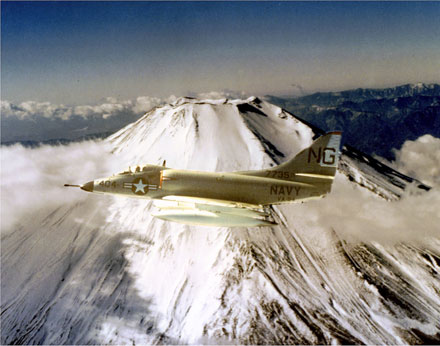 |
|
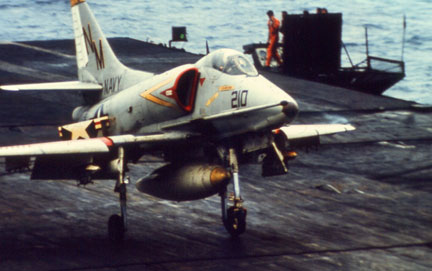 |
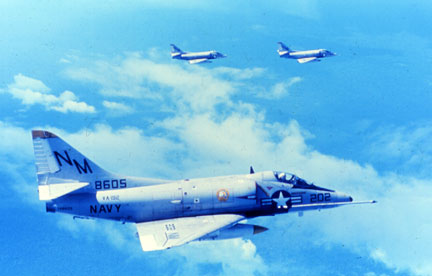 |
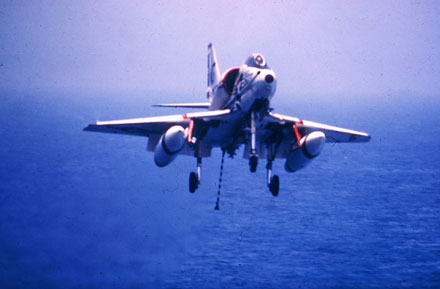 |
|